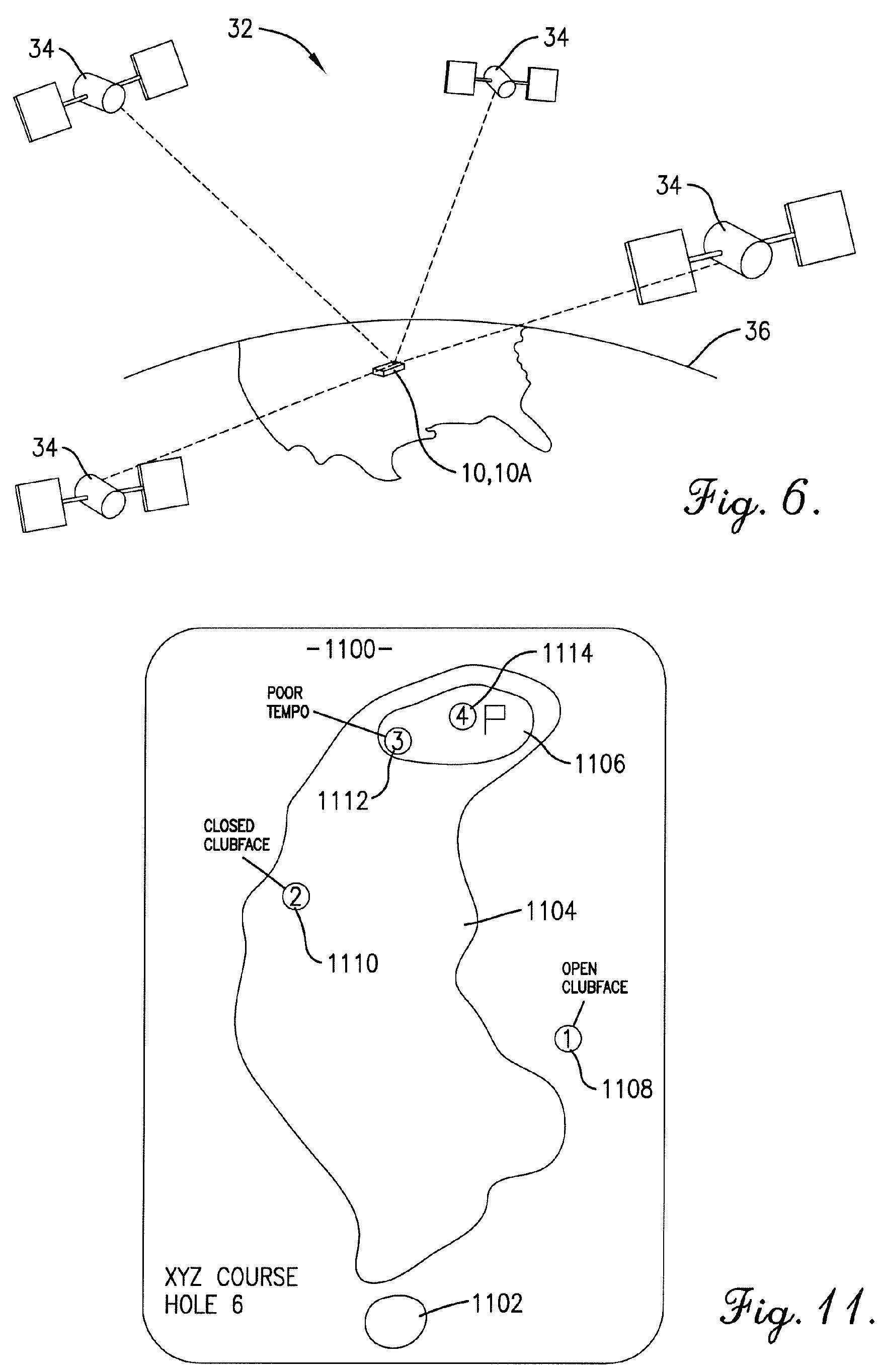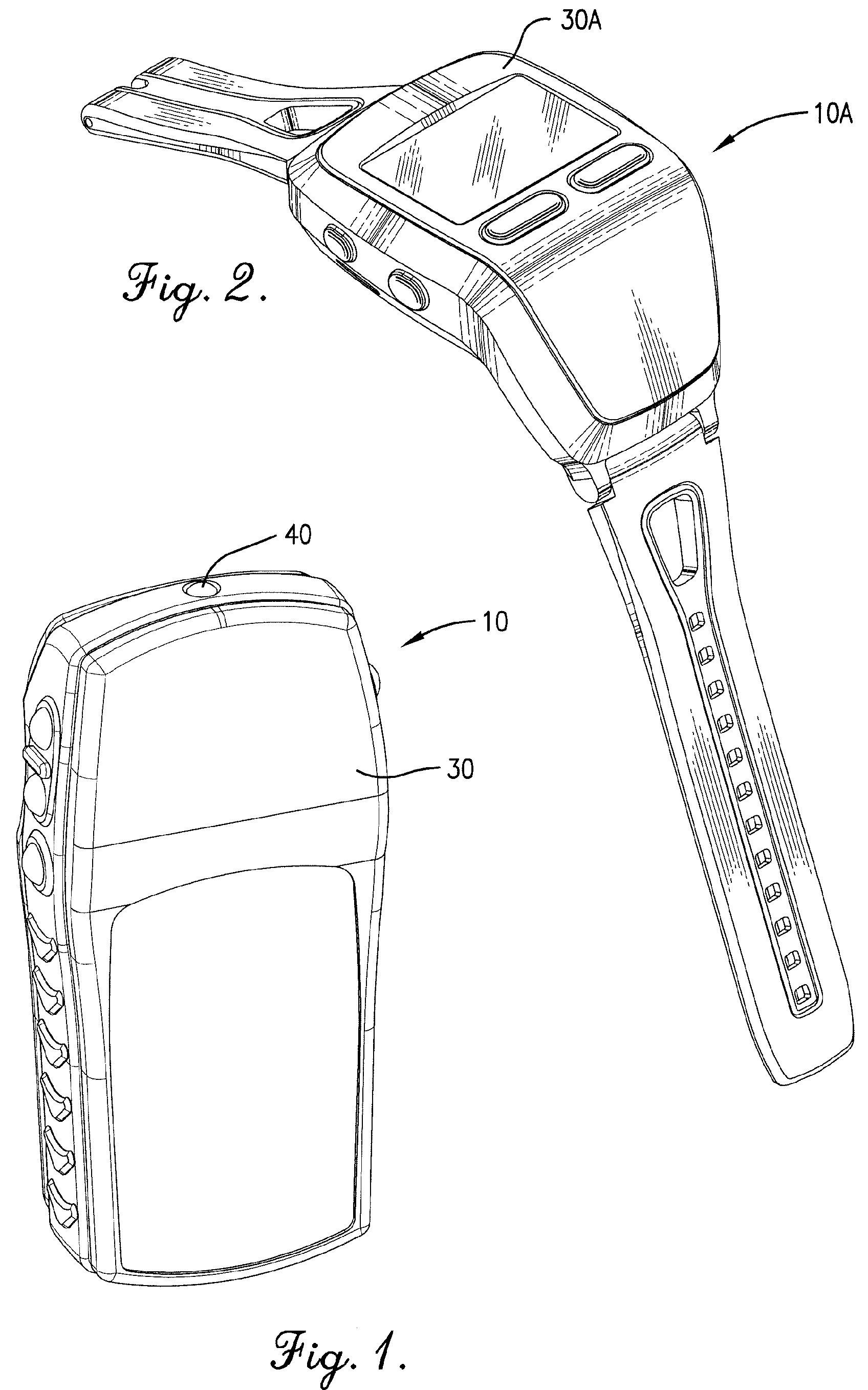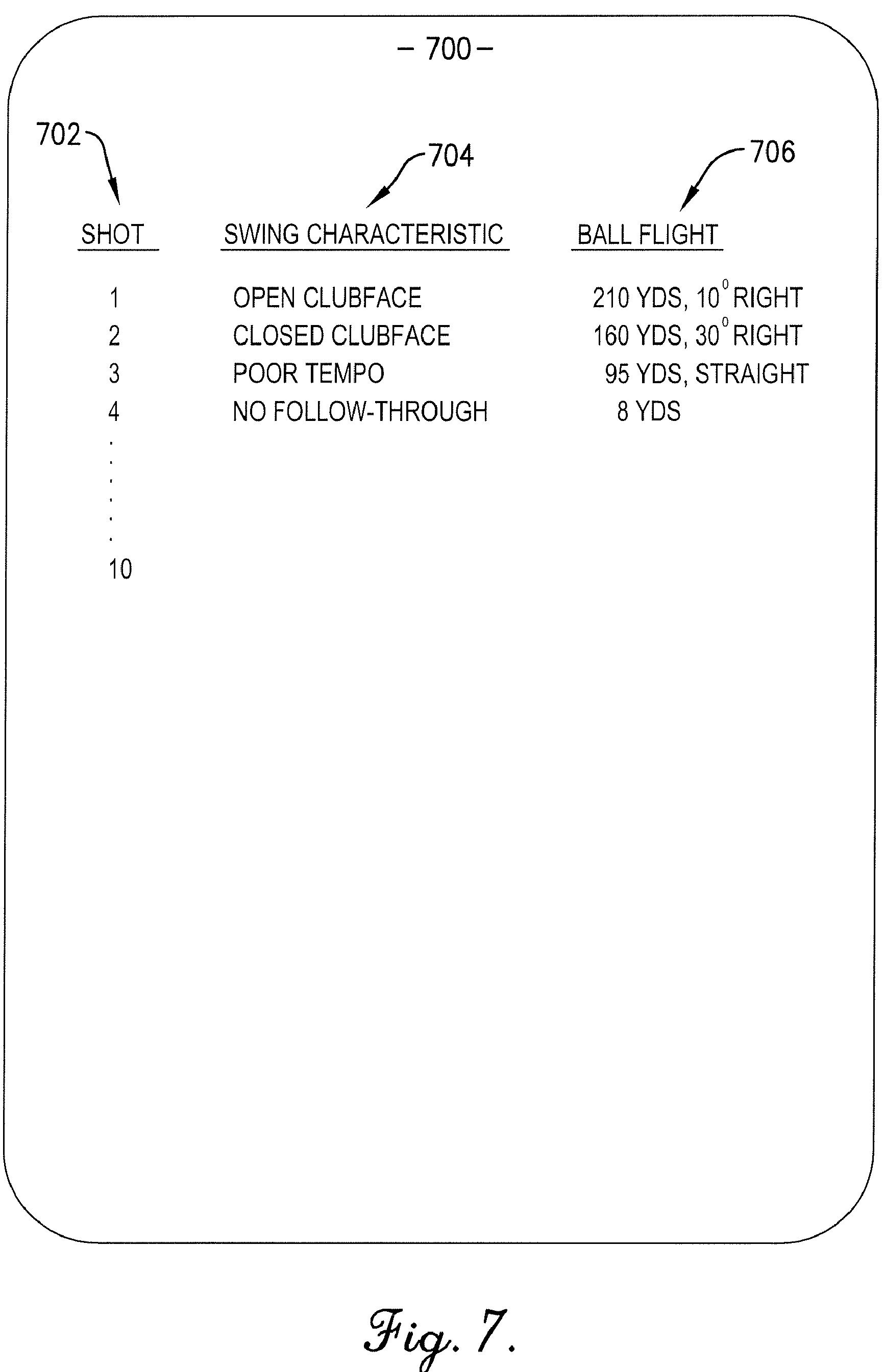The Future of Portable Golf Gadgets? Garmin Hopes So
Brace yourself. I don’t want to get your hopes up right before Christmas, but this invention would likely change the way most of us play a round of golf. The invention is disclosed in a recently published Garmin patent application; namely, US Pub. No. 20090298605 titled “Methods and Devices for Analyzing Golf Swings.” The application explains:


Pull this off and it will be like printing money!
Dave Dawsey - Tracking Golf Training Inventions
PS – click HERE to check out interesting putter posts
[0001] Embodiments of the present invention relate to golf swing analysis methods and devices. More particularly, embodiments of the invention relate to methods and devices that associate actual golf ball flight data with sensed swing characteristic data.
[0002] Golf is one of the most difficult sports to learn because relatively minor golf swing errors can result in exaggerated mis-hits. For example, a relatively minor mis-positioning of a golf club head face (e.g. closed club face or open club face) may result in a severe slice (ball curves right) or hook (ball curves left).
[0003] Because most golf swing errors are difficult to detect by the naked eye, a great variety of automated swing analysis systems have been developed. Some of these systems detect golf swing characteristics with video equipment, lasers, acceleration sensors, or other technologies and then attempt to predict a golf ball's trajectory or resting place based on the sensed swing characteristics. For example, a swing analysis system may sense an open club face and then display or otherwise indicate a slice, because an open club face often results in a slice. Unfortunately, such predictions are often inaccurate because the same swing characteristic, when slightly changed, may result in different ball flight trajectories and distances. Moreover, many golfers have multiple swing flaws that, when combined, result in difficult to predict results. For example, many novice golfers simultaneously swing "over-the-top" (downswing starts outside ball and ends inside ball) and close their club face. The first error often results in a slice, whereas the second often results in a hook or pull-hook. Combined, the two errors can result in any of these mis-hits or even a relatively straight (although weak) shot. Therefore, existing swing analysis systems often fail to accurately predict the actual trajectory or resting place of golf balls.
SUMMARY
[0004] Embodiments of the present invention provide a distinct advance in the art of golf swing analysis methods and devices by providing a method and device that associates actual ball flight data with sensed swing characteristic data. Embodiments of the invention may be implemented with an electronic device that includes a location-determining component; a sensor; a display; and a computing device all housed within a portable, handheld or wearable enclosure. The electronic device and its components illustrated and described herein are merely examples of a device and components that may be used to implement embodiments of the invention and may be replaced with other devices and components without departing from the scope of the claims.
[0005] The location determining component is used to determine an approximate start position of a golf ball and an approximate rest position of the golf ball after it has been struck. In one embodiment, the location-determining component is a satellite navigation receiver that receives satellite signals from a plurality of satellites and determines location information as a function of the satellite signals. In other embodiments, the location determining component may receive location information from other external devices such as a separate satellite navigation receiver.
[0006] The sensor senses at least one swing characteristic of the golfer or the golfer's golf club as the golfer strikes the golf ball. For example, the sensor may sense a club head loft angle, a club head face angle, a club head velocity, a club swing path, a club swing plane, the golfer's stance, the golfer's head position, swing timing, the golfer's backswing, the golfer's impact position, the golfer's follow-through, the golfer's shoulder rotation, the golfer's wrist angle, or any other aspect of a golf swing.
[0007] In some embodiments, the sensor may be configured to be placed on the ground near a golf ball to be struck so as to sense a movement, speed, or position of a golf club as it strikes the ball. For example, the sensor may be a position or motion type sensor including a radiation source for providing a plane of radiation through which a golf club can pass, a radiation sensor or reflector carried by the golf club, a timing circuit operable for determining a time period between passage of portions of the golf club head through the radiation plane, and a processing system for processing the time period and calculating a characteristic value for club head movement through a ball impact zone. The sensed club head characteristic may be, for example, the club's loft angle, face angle, velocity, path or other measurable characteristic.
[0008] In other embodiments, the sensor may be configured to be worn or carried by the golfer to sense a swing characteristic based on the golfer's movements. For example, the sensor may be an inertial type sensor including one or more accelerometers and a processing system. The accelerometers measure accelerations of the golfer's arm or other body part, and the processing system estimates a motion parameter utilizing the acceleration measurements. The motion parameter may be, for example, a duration of the golfer's backswing, downswing, or follow-through or a speed or tempo of the golfer's swing or portion of a swing.
[0009] In still other embodiments, both a motion-type sensor and an inertial-type sensor may be used to sense the same swing characteristics or may be used to sense different but related swing characteristics. The sensor or sensors described herein for sensing swing characteristics may be replaced with other known golf swing sensors.
[0010] The computing device is coupled with the location-determining component and the sensor for calculating ball flight data and associating it with data for the sensed swing characteristics. The ball flight data may be calculated based on the approximate start position and the approximate rest position of the golf ball and may include, for example, a driving distance or other distance of the golf ball; an angle between the approximate start position and approximate rest position of the golf ball; a distance between the approximate rest position of the golf ball and a fairway; a distance between the approximate rest position of the golf ball and a green; a distance between the approximate rest position of the golf ball and a portion of a green; a distance between the approximate rest position of the golf ball and a flagstick; or a distance between the approximate rest position of the golf ball and a hazard.
[0011] The computing device may associate the ball flight data with the swing characteristic data by storing the data together in memory, linking the data in memory, displaying representations of the data together, or by any other method. In some embodiments, the computing device may also associate the ball flight data and swing characteristic data by creating a reference profile for a golfer based on the ball flight data and the swing characteristic data for a plurality of golf swings. The computing device may also associate ball flight data and/or swing characteristic data with particular golf clubs.
[0012] The housing may be sized and configured so it can be laid on the ground in the vicinity of a golf ball to be struck to sense a swing characteristic. In other embodiments, the housing is wearable, much like a watch, to sense a swing characteristic based on a user's arm or other body movements while swinging. In yet other embodiments, the electronic device may consist of both a handheld device and a wearable device that each perform some of the functions described herein.
.
.
.
[0043] In the embodiment of the device 10 shown in FIGS. 1 and 2, the sensor 14 may be a position or motion type sensor configured to sense a position or orientation of a golf club head 38 before, during, or after it strikes a golf ball 39. The sensor 14 may include a radiation source 40 for providing a plane of radiation through which the golf club can pass, at least one radiation sensor 42 carried by the golf club, a timing circuit operable for determining a time period between passage of portions of the golf club head through the radiation plane, and a processing system for processing the time period and calculating a characteristic value for club head movement through a ball impact zone. The sensed club head characteristic may be, for example, the club's loft angle, face angle, velocity, path or other measurable characteristic.
[0044] The radiation source 40 may be positioned on one end of the housing 30 as illustrated in FIG. 2 so the electronic device 10 may be placed on the ground between the golfer and the golf ball 39 with the laser beams directed toward the golf ball 39. During a swing, the golf club 38 moves through the various planes of laser beams and the beams are detected by the sensor 42. Data is then transmitted from the sensor 42 carried on the golf club to the electronic device, which calculates the club head position, orientation and velocity relative to the golf ball at the point of impact with the golf ball. The radiation sensor 42 may also be a reflective type sensor that reflects the radiation from the radiation source 40 back to a detector or other sensor.


Dave Dawsey - Tracking Golf Training Inventions
PS – click HERE to check out interesting putter posts



Comments